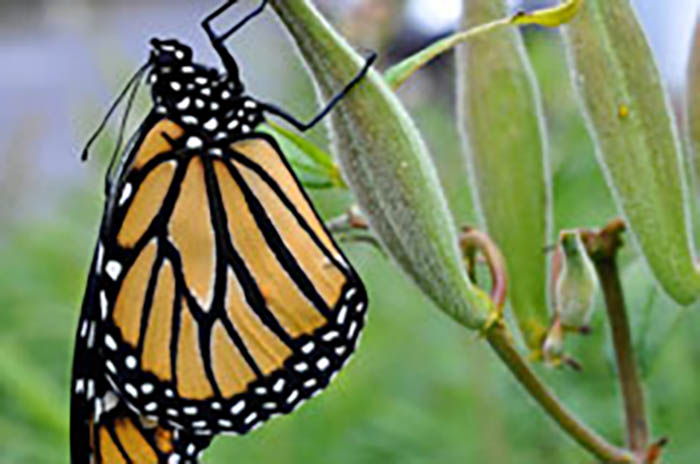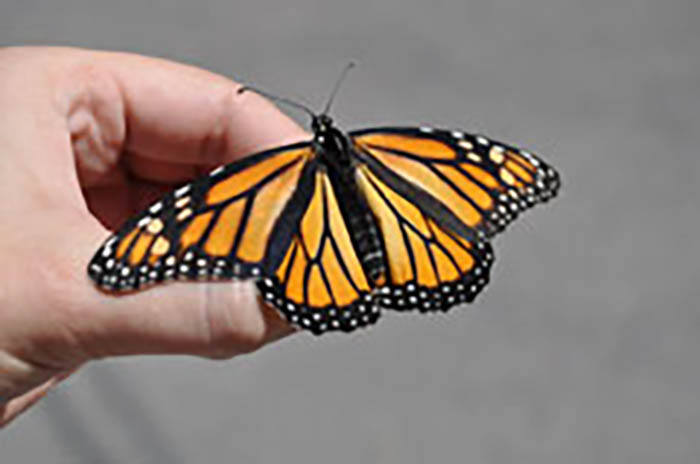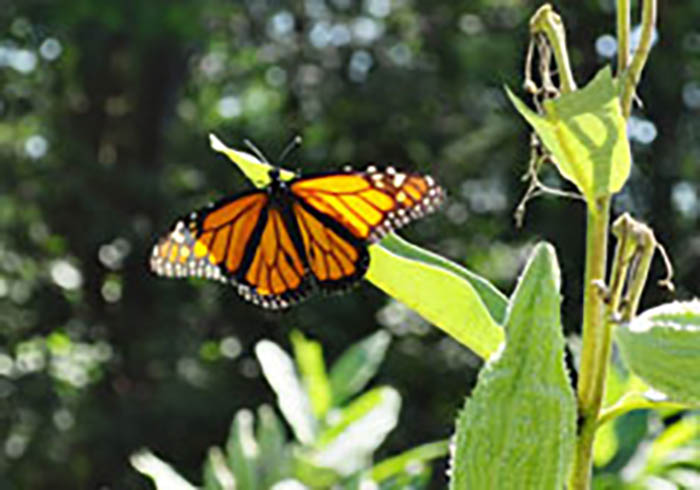Easily one of the most recognizable butterflies in America, monarchs hold a special place in the hearts of many garden lovers. These beautiful orange and black creatures are always a delight to see in any garden. What makes monarchs so special, and why is Shaver’s Creek taking the time to monitor them this summer?
 Monarchs are unique in the fact that they are the only butterfly known to migrate south and north as birds do. Because the adult butterflies are unable to survive the harsh winters of the north, they must make the nearly 3,000 mile journey south each year. The monarchs we see in Pennsylvania are “Eastern North American Monarchs”, and their over-wintering site is in the mountains of Mexico. When they are migrating, a monarch can cover 50-100 miles in a single day!
Monarchs are unique in the fact that they are the only butterfly known to migrate south and north as birds do. Because the adult butterflies are unable to survive the harsh winters of the north, they must make the nearly 3,000 mile journey south each year. The monarchs we see in Pennsylvania are “Eastern North American Monarchs”, and their over-wintering site is in the mountains of Mexico. When they are migrating, a monarch can cover 50-100 miles in a single day!
Once they make it to their southern destination, the butterflies will “cluster” together, completely covering trees in a thick blanket of monarchs. They stay as still as possible through the winter to conserve energy for laying eggs in the spring.
When spring does come, the monarchs who over-wintered complete their lifecycle by laying eggs for a new generation. Whereas the journey south was completed by a single generation of monarchs, the trip north will take about 4 generations. By the time the monarchs reach us in Central Pennsylvania, they have already cycled through a few generations.
 Across the nation there are several monarch monitoring programs, employing citizens to record the number and frequency of monarchs in their area. These efforts exist because the monarch butterfly population seems to be declining. There are many reasons this could be happening, from milkweed habitat destruction to parasites attacking the caterpillar stage of the insect. The purpose of the project Shaver’s Creek is a part of, the Monarch Larval Monitoring Project, is to track the number of monarch caterpillars and adults we observe in our milkweed patch.
Across the nation there are several monarch monitoring programs, employing citizens to record the number and frequency of monarchs in their area. These efforts exist because the monarch butterfly population seems to be declining. There are many reasons this could be happening, from milkweed habitat destruction to parasites attacking the caterpillar stage of the insect. The purpose of the project Shaver’s Creek is a part of, the Monarch Larval Monitoring Project, is to track the number of monarch caterpillars and adults we observe in our milkweed patch.
 Speaking of observing monarchs, can you tell the difference between a male and female adult monarch butterfly? If you look closely these two pictures, you will notice that one butterfly has two black dots on the veins closest to the butterfly’s body. Monarchs with these markings are males, and the dots are scent glands that help them attract females!
Speaking of observing monarchs, can you tell the difference between a male and female adult monarch butterfly? If you look closely these two pictures, you will notice that one butterfly has two black dots on the veins closest to the butterfly’s body. Monarchs with these markings are males, and the dots are scent glands that help them attract females!
~ Jillian “Chicory” Hanelly, Summer 2012 Plant Science Intern

I just found a monarch caterpillar in Cameron County today August 19. Since from raising them many years ago i know you do not let them go after the third week of Sept i was wondering if this is enough time for it to Chrysalize (?) and be on its way south?